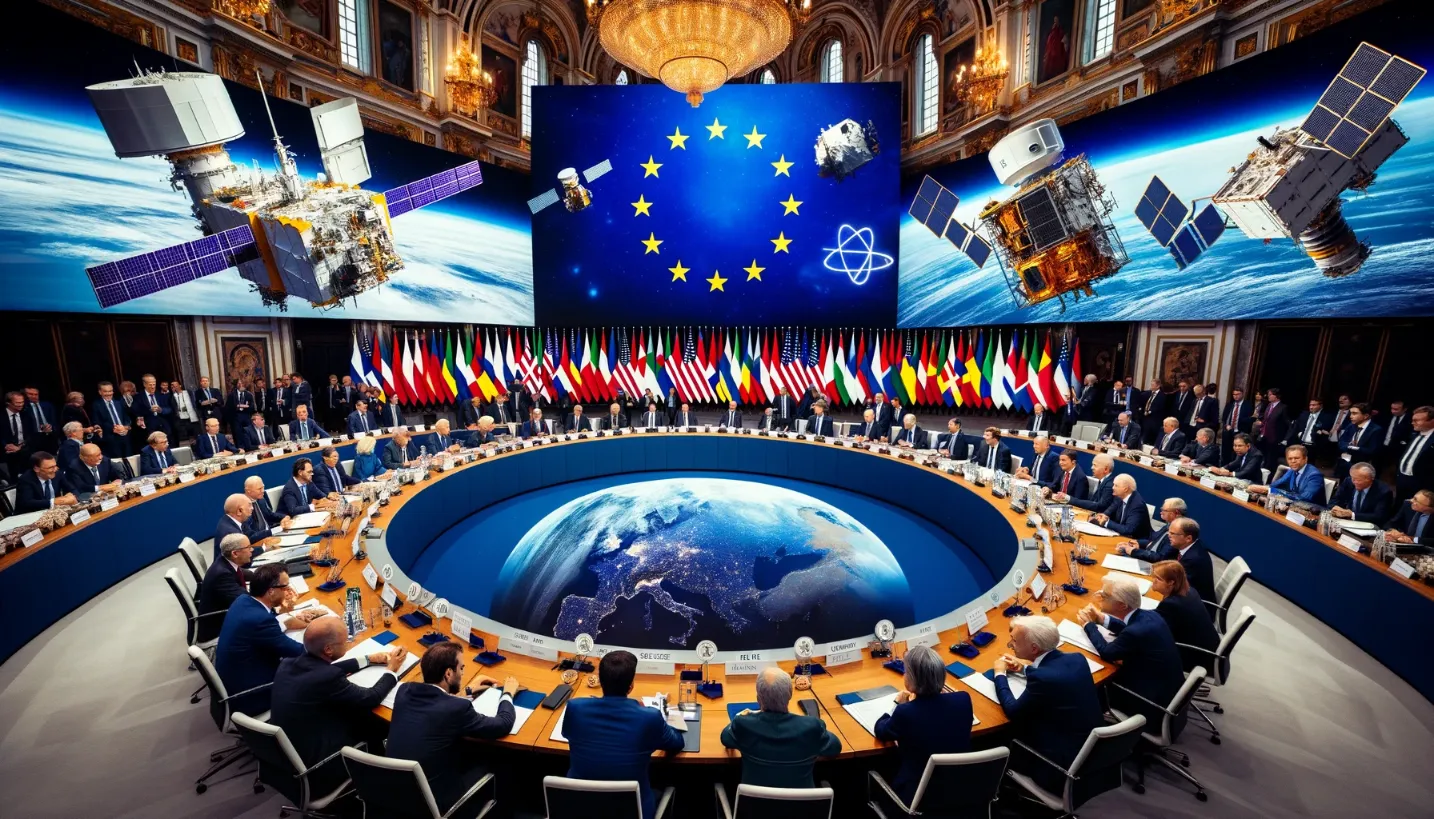Europe’s plan to fortify the final frontier

Europe is increasingly reliant on space-based systems for collective security and defence. This has prompted a deeper investigation into ways to protect and preserve access to these assets. The next step in these discussions is for European Union leaders and space system developers to align political visions and technical concepts to deter interference with vital space services.
A European space strategy
Europe has a strong starting point for space defence. It has regional expertise and partnerships with leading spacefaring nations to defend against hostile behaviour in space.
Earlier this year, the European Union developed a European Space Strategy for Security and Defence as part of the broader work on EU security planning. The document considers a host of space-related issues and defines how Europe will tackle risks and threats to its space systems that support basic civil services and security activities.
Europe’s new strategy focuses on developing robust systems that form the foundation of space security. It launched a pilot project to improve space domain awareness, expanding on prior European Council decisions. In addition, the strategy aims to deter hostilities in space. This mission is predicated on both political and technical advances. Foremost, EU states must agree on what threats must be deterred.
Following multilateral discussions on reducing space threats, the EU released statements in February that outlined a few high-level priorities, such as developing normative restraints on states’ deliberate creation of orbital debris. French perspectives at these meetings illustrate concerns about a variety of behaviours, including hybrid or “grey zone” tactics, low-intensity harassment, and other activities that threaten states’ vital space assets.
To establish effective deterrence, Europe’s political discussions must first define what constitutes impermissible behaviour and then communicate credible resolve in responding to crises.
Space deterrence paradigms
There are many paradigms for deterring hostilities. They all rely on affecting adversaries’ decision calculus when deciding on a course of action. Some archetypal deterrence methods are more credible than others in the space context. Furthermore, Europe is more prepared to execute strategies derived from deterrence by denial rather than punishment to protect satellite systems because of challenges endemic to the region and space itself.
Deterrence by punishment in the space context faces several challenges. Eye-for-an-eye-style retaliation is unlikely to be credible in the European context if not the space domain more broadly. First, the European Union has politically eschewed direct ascent antisatellite weapons on behalf of all member states, eliminating an entire suite of potential retaliatory capabilities. Second, Europe’s adversaries may not have the same advanced space architecture, limiting the viable targets for symmetrical retaliation. Thus, deterrence by punishment necessitates credible cross-domain threats, opening the door to unintended horizontal escalation. Simply put, deterrence by punishment is a crude cudgel for addressing threats to European space assets.
Europe could adopt a deterrence-by-denial posture by convincing adversaries that attacking critical space systems would be futile. Strategies to repulse adversaries’ attacks, whether by passive resilience or active defence, would not require states to hold particular targets at risk of retaliation or otherwise tailor deterrence to a specific belligerent. This inherently defensive posture is more appealing because it doesn’t require offensive capabilities.
Deterrence-by-denial strategies circumvent some issues present in punishment strategies, such as those related to attribution. Defending against attacks on space assets doesn’t depend on identifying the source of the threat, so the credibility of a deterrence posture does not rely on attribution.
Deterring adversaries by denying their hostilities is still difficult, however. Satellites are hard to defend because of the large attack surface: satellites are vulnerable to kinetic, directed energy, and cyber interference. Defending individual satellites that are already in orbit across all three vectors is impractical, if not impossible. Thus, deterring adversaries by constructing strong defences is not a viable option.
Europe’s third option is deterrence by denial that relies on technical advances within reach. A viable approach is rapid reconstitution of vital capabilities. Often called “responsive space”, promptly replacing satellites that fail for any reason is essential to ensuring continued access to critical services.
Recent military exercises in September in the United States demonstrate the maturation of responsive space. Europe could further tailor this strategy to meet the European Defence Agency’s specific security requirements and fit the continental logistical puzzle.
Layering reconstitution
European satellites support a variety of security missions. For instance, satellites in the Copernicus Earth observation system contribute geospatial data related to security concerns to the EU External Action Service. These imaging satellites, and other critical satellite-enabled security capabilities like military command and communications, would be prime candidates for rapid reconstitution. To tailor the strategy to the European context, technologists and policymakers should focus on developing methods for reconstituting these capabilities systems that do not need to be launched into orbit.
Terrestrial or aerial systems may best support reconstituting capabilities to support Europe’s immediate security needs during a crisis. Because relevant crises are most likely to arise around Europe’s borders or close to the periphery, these systems do not need to provide global coverage. Therefore, adequate deterrence could be provided by systems like reconnaissance drones that could be rapidly deployed to supplement or replace theatre intelligence provided by satellites.
This plan would also bypass other issues related to establishing deterrence by rapidly reconstituting satellite constellations. While it may be anathema for space-minded technologists to explore solutions that do not rely on satellites, Europe does not have access to an efficient logistical network, lowering the credibility of deterrence by reconstituting satellites themselves. It is unlikely to resolve this issue through new policy or technical support.
European satellites, like those of the Galileo constellation, are launched from Kourou, French Guiana. The launchpad is simply too far away from production sites to enable prompt responses to service degradation. Thus, Europe’s deterrence posture is likely best supported by terrestrial or aerial means to reconstitute capabilities currently provided by satellites.
Europe has been exploring options that could serve this deterrence strategy. For instance, the European Defence Agency is validating systems that provide military aircraft with navigation support if satellite-enabled services are unavailable. This approach should be expanded to other vital security capabilities, namely observation systems that transmit timely theatre intelligence and the communications links that enable strategic command and control.
Building a multilayered reconstitution capability is the best way for Europe to safeguard their space-based assets and support space security on a global scale. It will be important for European security organisations to practise deploying these capabilities on short notice to demonstrate resolve and deter potential adversaries.




